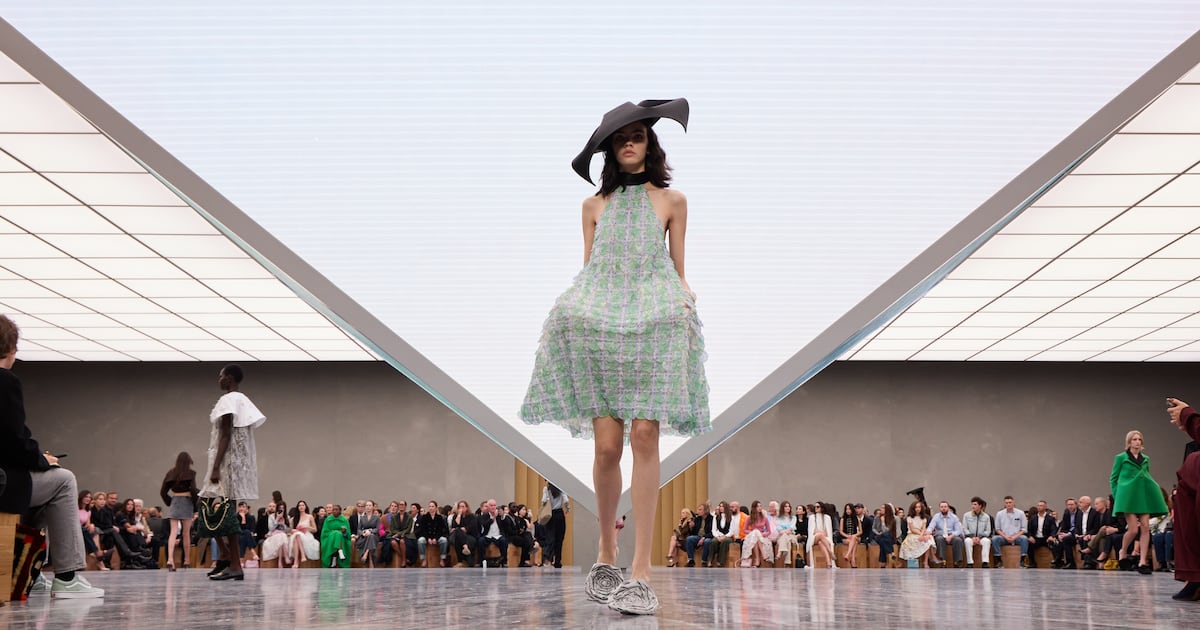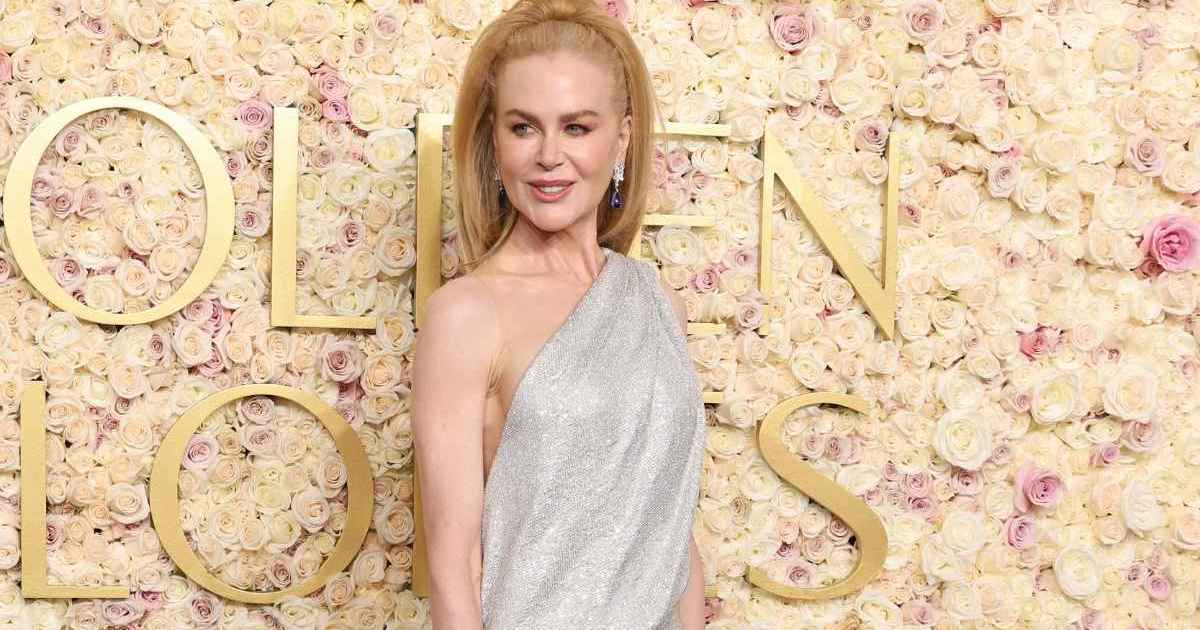PARIS — At the end of a season marked by firsts — with Jonathan Anderson’s debut at Dior, Matthieu Blazy at Chanel, Pierpaolo Piccioli at Balenciaga, Demna at Gucci, Duran Lantink at Jean Paul Gaultier and more — one question inevitably arises: What relationship should artistic directors have with the past? Will they act as guardians of memory, or as entertainers, diluting their work’s meaning to make it more Instagrammable?
Two years into an industry-wide slowdown from which the path forward for fashion remains unclear, “the past becomes a refuge, full of mirages we can turn to paper over the present,” observes Didier Barroso, Parisian gallery owner and director of the vintage boutique Plaisir Palace.
At a time when history itself feels endangered — erased or rewritten by politics and AI, which obscures sources and floods the record with deepfakes — the question grows only more complex. Is an artistic director there to design clothes, or to curate a house’s legacy? Is their role to rewrite history — artificially reviving memories and parodying style icons — or to reinterpret them for today?
At Dior, Jonathan Anderson established a clear dialogue with the past, reworking the Bar suit, Delft and Junon dresses, and the house’s signature caning on bags. Already in June, the former Loewe creative director set the tone by celebrating Dior’s stylistic vocabulary in his first men’s collection — positioning the brand as both a cultural and couture institution. His use of archive seems to comment on the present moment’s flattened view of history, where disembodied fragments of the past are always within reach.
In the 24-hour supermarket of the internet, everyone comes to stock up, with varying degrees of appetite, enthusiasm and ease. At Balenciaga, the founding “manifesto” looms large in Piccioli’s debut: “Traces of the past are redefined for the future. Memories of Cristóbal Balenciaga’s work elicit an instinctive response. More than a tribute, these are the shadows of Balenciaga’s architectural forms inscribed in today’s reality,” stated the press release.
Despite the good intentions and the desire to rediscover Balenciaga’s method through cut and construction, the intellectual weight of the exercise risks feeling too academic. It is not by replicating the past that one makes it contemporary. Can the act of cataloguing and classifying really be enough in a domain where the audience isn’t asked to just admire, but to buy?
Collections look like exhibitions, and — in that same climate of confusion — exhibitions look like stores: At the current Virgil Abloh retrospective in the Grand Palais, visitors are reprimanded for touching the T-shirts, often mistaking the artifacts for merchandise to buy.
Scholarly compilations are presented as the new status symbols. At Gucci, Demna’s “Grande Famiglia” collection documented and reissued a range of looks from different eras in the brand’s past, referencing Tom Ford, Alessandro Michele and more. Already for Cruise 2026, Gucci had staged its show within its Florentine archives — fashion literally inhabiting its own history.
Today’s designers are hardly the first to navigate fashion’s complex relationship with the past: Houses are simultaneously obsessed with defining and defending their aesthetic territory, celebrating moments of past glory while asserting their relevance to what’s new, now, next.
But it’s intelligent transformation that defines true luxury — the ability to find in the past elements that feel right for the time.
Karl Lagerfeld mastered this balance. A living archive of fashion history who nonetheless called himself an “amnesiac of the past,” he paved the way, starting in 1983, for fashion’s ongoing game of creative musical chairs — where designers are tasked with both preserving and transforming iconic houses. Drawing from Gabrielle Chanel’s work, he defined a visual language — les codes — of motifs, numbers and materials, reactivated through inspiration and play. For 36 years, he kept Chanel’s tweed alive, dynamising it with unrelenting energy and joy.
Other designers look beyond the codes of their own houses, tapping into places and historical moments — like the Palace of Versailles — to comment on their own time. What connects Balmain’s 1953 “Versailles” gown, Dior’s Marie Antoinette-inspired blue organza dress (haute couture Spring/Summer 1955) and Junya Watanabe’s 2003 toile de Jouy dresses? Each weaves a network of connections from living material — an emotional, sensory immersion in a place, a story, a vocabulary.
This is precisely what Mathieu Blazy achieved in his debut collection for Chanel. While honouring the house’s signature codes, he reset the message by grounding his vision in the brand’s very foundations. He retold the story of Gabrielle Chanel’s life-changing love affair with Boy Capel, who helped launch her business at the turn of the 20th century. The show reinterpreted both the house’s DNA and its founding myth with emotion, but not nostalgia. A new energy moves within the house — and yet it feels as though it has always been there. Such is Blazy’s sensitivity to the moment: his ability to tell Chanel’s story in his own grammar.

Words, stories, memories are often more powerful than images for those who seek to make meaning through fashion, rather than simply defending a brand territory or generating marketing heat.
Firmly closing the anaemic beige era of “quiet luxury,” emotion now sits on the surface — with the power to erase anachronism and hesitation. Elsewhere, Sarah Burton’s strength lies in her return to the spirit of the Givenchy cut — the gentle precision of its lines, an eloquent economy of means that emphasises intention over justification — rather than reducing its heritage to images on a moodboard.
Too often, however, artistic directors turn to the archive to prove their credentials — to demonstrate mastery of the repertoire. In the race for media hype, and the need to quickly justify their appointment, a form of historical hijacking has taken hold. Everywhere, we see evidence of a more demonstrative relationship with history — but the soul has slipped away.
The stylistic exercise of seizing a label’s heritage and reformulating it in contemporary terms remains a perilous one. “Today, the museumification of appearances ends up freezing emotion as well as motion, weighing down silhouettes with too many references,” Barroso notes.
Conversely, some designers now refuse to engage with the archive at all — an easy shorthand for avant-gardism. For his first Jean Paul Gaultier show, Duran Lantink focused on a single reference, Junior. While he’s sacrificed his own brand to focus on the Puig-backed house, he failed to recede enough to let the house shine. The boundaries between homage and citation, inspiration and parody, grow increasingly blurred.

In an era of collage and photomontage, Didier Barroso notes that long-standing designers like Anthony Vaccarello — now going on a decade at Saint Laurent — are often the ones capable of making new desires blossom from the garden of the past. Whether in the inverted triangle silhouettes of the early eighties or dresses reminiscent of the one Isabelle Adjani wore when she received her first César in 1981 — a YSL haute couture taffeta gown inspired by Matisse’s “Lady in Blue” — Vaccarello’s energy is constantly renewed by the archive. Beyond the fabrics’ featherweight movement, it is the Saint Laurent allure itself that lives again.
The greatest common thread between Vaccarello and Yves Saint Laurent remains a shared love of Paris — a city both dreamed and dramatised. This season, as the brand planted 15,000 hydrangeas to shape a colossal YSL monogram in a garden overlooking the Eiffel Tower, the intensity of that dream was strong enough to erase any differences.
At Hermès, Nadège Vanhée manages to sublimate the brand’s equestrian heritage. Leather, straps, buckles and harnesses demonstrate saddlery expertise, but position them in the service of a woman in movement. An intimate feeling of freedom, space, luxury and functionality emerges.
To capture the invisible and make it visible — this is how names became brands. And this is how personalities such as Matthieu Blazy at Chanel and Nadège Vanhée at Hermès capture the spirit of the times: not by seeking to appropriate the past — carrying their castles with them into battle, so to speak — but by using it for fuel.
“There is no past we can bring back by longing for it. There is only an eternal now that builds and creates from the past,” Goethe is often quoted to have said.
Let’s leave retrospectives — even well-done ones — to the museums.


